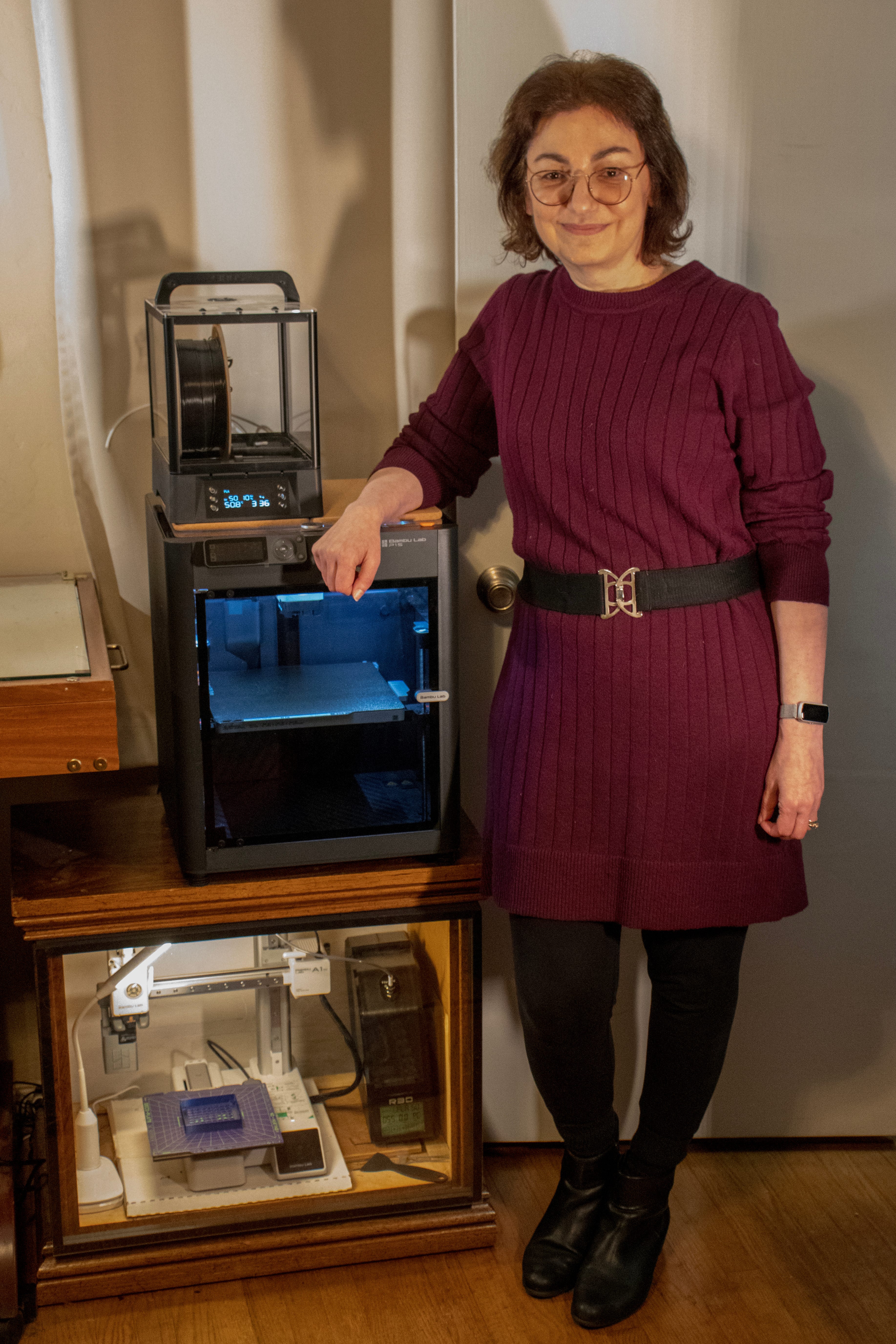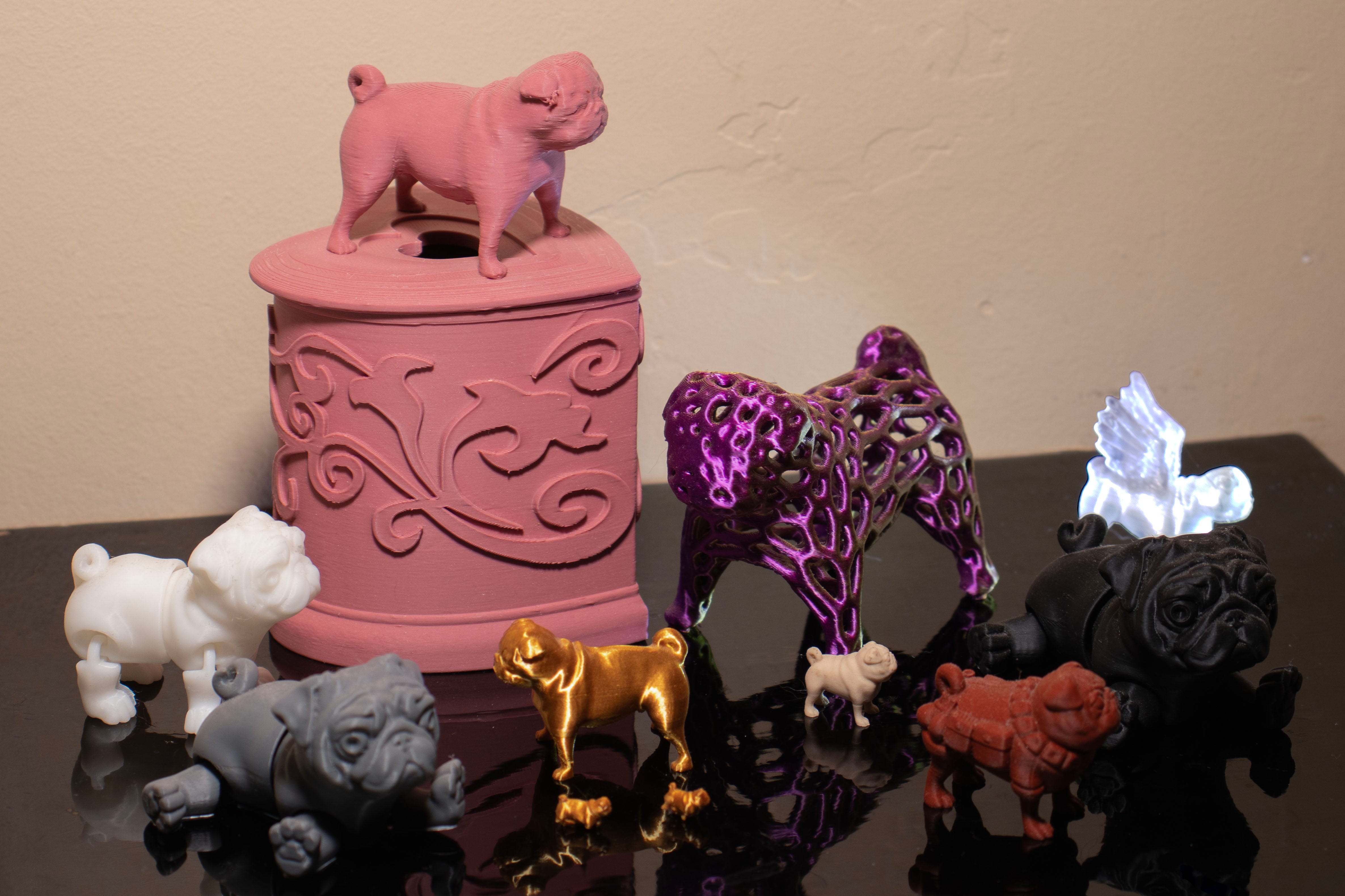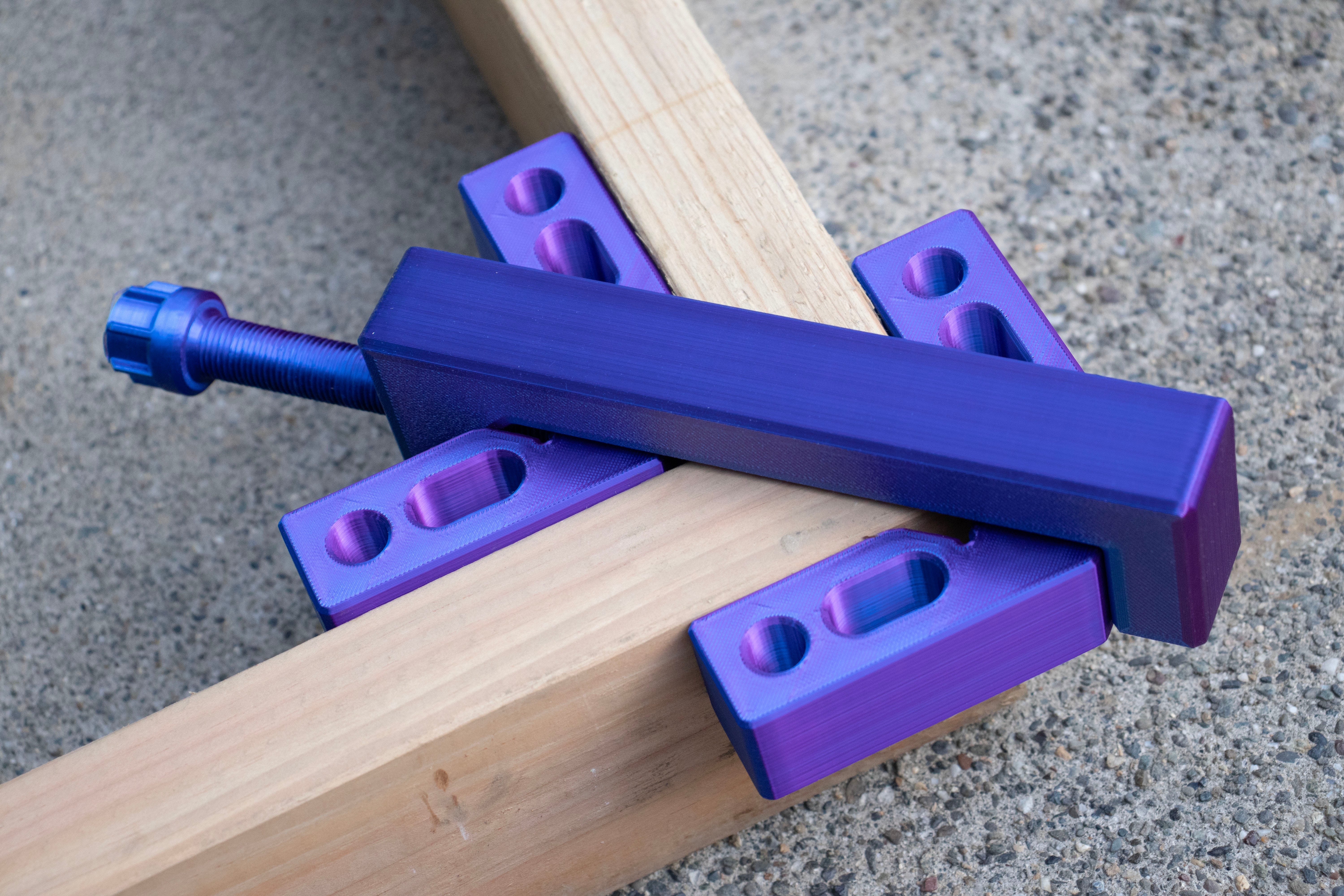
Courtesy of Inna Tysoe
I bought my husband a 3D printer for his 50th birthday. It was $700, but you don’t turn half a century every day, so I splurged. I figured 3D printing would make a great hobby, and that’s all it was at first.
He 3D-printed Dungeons & Dragons characters for himself and a few pug figurines, which resembled our dogs, for me when I was called back into the office.
Then the hinge that opens the trash can’s lid broke.
Normally, an extra $40 for a new garbage can wouldn’t have been a big deal, but that month, our pugs were sick, the home warranty had gone up, and the car needed a service. I was dipping into savings again and again, and wasn’t looking forward to spending $40 on one more thing that had gone wrong.
It turned out I didn’t have to. My husband took one look at me and said, “Maybe there’s something I can do.”
A few days later, he’d designed and printed a replacement hinge. It took him a few tries, but the garbage lid still works a year on. The real benefit, though, was how the 3D printer changed the way we fix things around the house and how much money we’ve saved as a result.
We’ve saved over $1,000 this year by 3D printing spare and broken parts

Courtesy of Inna Tysoe
A month after the trash can lid broke, our pugs attacked our $300 vacuum cleaner. As I wrestled with them, the clip holding the air hose inside the vacuum broke, and the pugs grabbed it, chewing it and breaking it further.
We had two-thirds of the 2 ½-inch clip left. My husband used that bit to model a new one. It took him two or three attempts to make sure that the new clip would fit securely, but by the end of the day, we had a working vacuum cleaner once more and didn’t have to buy a new one.
When the dining room table leg received a few choice bites, the table keeled over. Once again, like a knight in shining armor, the 3D printer produced a replacement for the semi-digested bit and the table was upright in no time — no need to shell out $700 for a new table.
Even the tools my husband uses for his DIY repairs are 3D printed. Just last week, he needed a better grip on his soldering iron and printed a tool for that. When he needed to hold planks of wood straight to build bookshelves, he used some colorful filament to create a very festive-looking tool.

Courtesy of Inna Tysoe
He fixes most things using the 3D printer these days, and it’s saved us about $1,400 this year alone and only cost roughly $100 in materials.
There’s also the convenience: a month ago our sewage pipes burst, but we were still able to use them (a little) because he 3D printed temporary covers for the pipes.
We even bought a second 3D printer on sale for $200, which my husband uses to design prototypes — this is another money-saver because prototypes can be made from cheaper filaments. After the 3D printer, filament is the biggest expense — 2 ½ pounds costs between $10 and $50. By designing prototypes from cheaper filament, we save money on trial and error.
My husband either designs parts from scratch or downloads free designs online
My husband will sometimes design replacement parts from scratch, but usually he finds designs online and then modifies them to the exact specifications we need.
Enthusiasts can upload their 3D printing designs to sites such as Thingiverse, MakerWorld, and Printables.com so others can use them for free. The uploaders get points for every download, which they can then turn into cash or other rewards.
Things break all the time and need to be fixed or replaced. Given today’s ever-rising prices, I’m thankful for our 3D printer. What started out as my husband’s hobby has become an almost miraculous inflation-buster.
The post I bought my husband a 3D printer for fun. It’s changed how we fix things around the house and saved us $1,400 just this year. appeared first on Business Insider.




